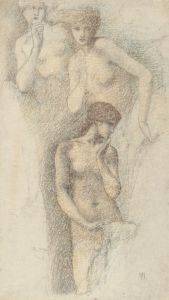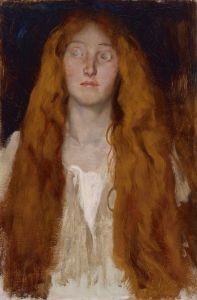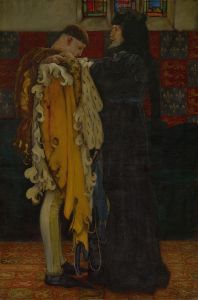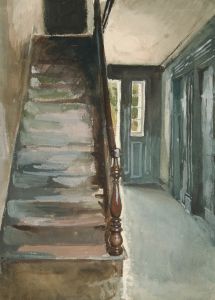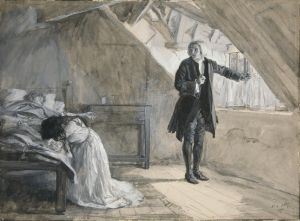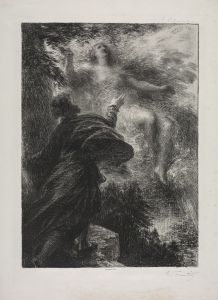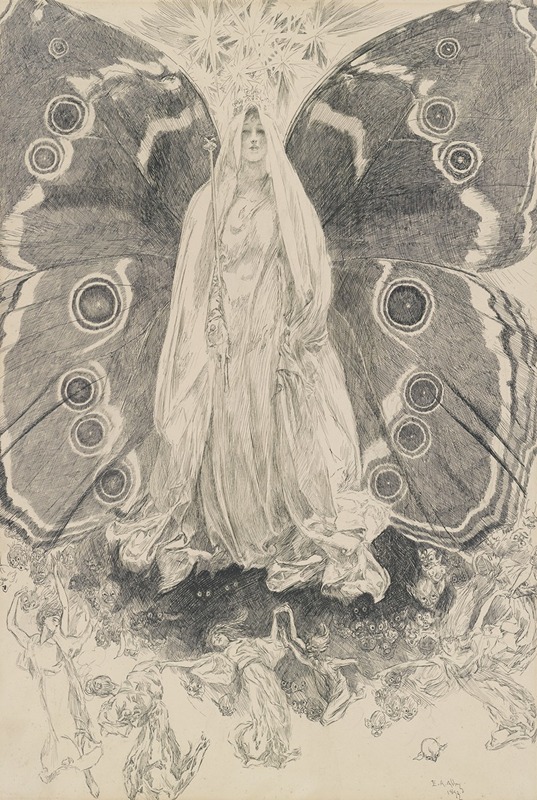
Titania, illustration for Act II, Scene ii, A Midsummer Night’s Dream
A hand-painted replica of Edwin Austin Abbey’s masterpiece Titania, illustration for Act II, Scene ii, A Midsummer Night’s Dream, meticulously crafted by professional artists to capture the true essence of the original. Each piece is created with museum-quality canvas and rare mineral pigments, carefully painted by experienced artists with delicate brushstrokes and rich, layered colors to perfectly recreate the texture of the original artwork. Unlike machine-printed reproductions, this hand-painted version brings the painting to life, infused with the artist’s emotions and skill in every stroke. Whether for personal collection or home decoration, it instantly elevates the artistic atmosphere of any space.
"Titania, illustration for Act II, Scene ii, A Midsummer Night’s Dream" is a notable artwork created by Edwin Austin Abbey, an American artist renowned for his illustrations and paintings. Abbey was born on April 1, 1852, in Philadelphia, Pennsylvania, and he became one of the most prominent illustrators of the late 19th and early 20th centuries. His works often depicted scenes from literature and history, and he was particularly known for his illustrations of Shakespearean plays.
This specific illustration by Abbey is based on Act II, Scene ii of William Shakespeare's "A Midsummer Night's Dream," a comedy written in the late 16th century. The play is one of Shakespeare's most beloved works, known for its intricate plot involving love, magic, and the interplay between the human and fairy worlds. In this scene, Titania, the queen of the fairies, is enchanted by Oberon, the king of the fairies, who uses a magical flower to make her fall in love with the first creature she sees upon waking.
Abbey's illustration captures the enchanting and whimsical nature of this scene. Titania is depicted in a serene and graceful pose, surrounded by her fairy attendants. The artwork is characterized by its detailed and delicate line work, which brings the magical atmosphere of the scene to life. Abbey's use of light and shadow adds depth and dimension to the illustration, enhancing the ethereal quality of the fairies and the enchanted forest setting.
Edwin Austin Abbey's career began with his work as an illustrator for magazines such as Harper's Weekly, where he gained recognition for his skillful and imaginative depictions of literary scenes. His illustrations for Shakespeare's plays, including "A Midsummer Night's Dream," were highly acclaimed and contributed to his reputation as a leading illustrator of his time. Abbey's work was not limited to illustrations; he also created murals and large-scale paintings, including the famous series of murals for the Boston Public Library.
Abbey's illustration of Titania is a testament to his ability to capture the essence of Shakespeare's characters and the magical world they inhabit. The attention to detail and the imaginative composition reflect Abbey's deep understanding of the play and his skill as an artist. This illustration remains an important example of 19th-century book illustration and continues to be appreciated for its artistic and historical significance.
Edwin Austin Abbey passed away on August 1, 1911, but his legacy lives on through his extensive body of work. His illustrations for "A Midsummer Night's Dream" and other literary classics continue to be celebrated for their beauty and their contribution to the visual interpretation of Shakespeare's plays. Abbey's work remains an important part of the history of illustration and a testament to the enduring appeal of Shakespeare's works.





